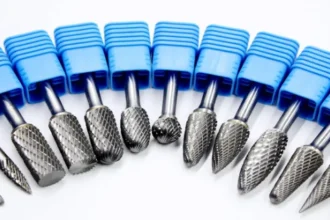Have you ever marveled at the intricate beauty of embroidered textiles? Crewel embroidery stands out as a vibrant form of this art, weaving together colors and patterns in a dance that captures the imagination. With its roots deeply embedded in history, crewel embroidery is more than just a craft; it’s an expression of creativity and storytelling through thread. Whether you’re an experienced crafter or a curious beginner, diving into the world of crewel can open up endless possibilities for self-expression. Ready to explore this captivating art form? Let’s unravel the threads together!
What is Crewel Embroidery?
Crewel embroidery is a decorative needlework technique that uses wool yarn to create intricate designs. This craft sets itself apart with its rich textures and vibrant colors, drawing attention to the artistry of each stitch.
The term “crewel” originates from the Old English word “crawle,” meaning twisted or knotted. Traditionally, this art form features floral motifs and nature-inspired patterns, lending an organic feel to fabric pieces.
What makes crewel truly unique is its versatility. It can adorn everything from wall hangings to clothing, transforming ordinary textiles into stunning works of art. The use of wool gives a distinctive texture that’s both luxurious and durable.
With its combination of skill and imagination, crewel embroidery invites artists to play with color palettes while experimenting with various stitches. It’s not just about following patterns; it’s about telling stories through thread on fabric.
History of Crewel Embroidery
Crewel embroidery traces its roots back to the 12th century in England. It emerged as a popular craft, celebrated for its intricate designs and vibrant colors. Originally, this art form used wool yarn to create stunning decorative pieces.
During the medieval period, crewel work adorned tapestries and wall hangings within castles and homes. This added an air of elegance and style to domestic spaces. The techniques were passed down through generations, evolving over time while retaining their unique charm.
In the 17th century, crewel embroidery gained popularity among aristocrats who commissioned elaborate bedcovers and furnishings. Its prominence continued into the 18th century when it became synonymous with luxury decor.
As centuries passed, this textile art faced decline yet experienced revivals during various artistic movements. Each era contributed fresh interpretations while honoring traditional methods that make crewel embroidery timelessly appealing today.
The Materials and Tools Needed for Crewel Embroidery
To dive into the world of crewel embroidery, you’ll need some essential materials. A high-quality linen or cotton fabric serves as a sturdy canvas for your artistic expression.
Next, select wool threads specifically designed for this type of needlework. Their rich texture adds depth and dimension to every stitch. Don’t forget to grab an assortment of needles; tapestry needles with a larger eye are ideal for threading thick wool.
An embroidery hoop is also crucial—it keeps your fabric taut, making stitching easier and more precise. Scissors are necessary too; sharp ones will help you achieve clean cuts when finishing off ends.
Having a good light source can make all the difference in seeing intricate details clearly while working on your masterpiece. With these tools at hand, you’re ready to let your creativity flow through each stitch!
Basic Stitches and Techniques Used in Crewel Embroidery
Crewel embroidery is as much about technique as it is about creativity. Mastering the basic stitches opens up a world of possibilities.
The backstitch forms the backbone of many designs, creating clean lines and shapes. It’s simple yet effective for outlining motifs and adding detail.
Next comes the chain stitch, which adds texture and depth to your work. This stitch resembles a series of interlinked loops, perfect for floral patterns or swirling vines.
French knots introduce an element of whimsy. These tiny puffs bring life to flowers or can serve as decorative accents throughout your piece.
Don’t overlook satin stitch. It fills in areas with smooth color transitions, giving a polished appearance to leaves or petals.
Experimenting with these techniques enhances your skills while allowing personal expression through crewel embroidery art. Each stitch brings its own charm to every project you undertake.
Creating a Design: From Sketch to Finished Product
Creating a design for crewel embroidery begins with a simple sketch. Grab your pencil and paper, and let your imagination flow. Think about the colors, shapes, and themes that inspire you.
Once you have a rough outline, refine it. Focus on details that will bring your vision to life. Consider how different stitches can enhance texture within your design.
After solidifying the sketch, transfer it onto fabric using light pencil marks or fabric markers. This step ensures clarity as you work through each stitch.
Select threads that complement your color palette. The variety of hues available allows for endless possibilities in shading and depth.
As you start embroidering, remember to embrace spontaneity. Sometimes an unexpected choice can lead to stunning results! Each stitch is an opportunity to express yourself creatively while bringing the initial concept into full bloom.
Inspiration and Ideas for Crewel Embroidery Projects
Crewel embroidery offers endless creative possibilities. Nature is a fantastic source of inspiration. Flowers, leaves, and birds can be transformed into vibrant designs that bring life to fabric.
Consider incorporating personal elements. Family heirlooms or favorite quotes can add depth to your work. Customizing patterns with colors that resonate with you makes it truly unique.
Explore different themes for your projects. Seasonal motifs like autumn leaves or winter scenes evoke warm feelings throughout the year. Abstract designs challenge traditional views and let your imagination run wild.
Don’t hesitate to experiment with textures too. Mixing various threads or combining crewel techniques with other embroidery styles can elevate your creations significantly.
Collaborating with fellow crafters opens new avenues as well, allowing ideas to flourish in unexpected ways while sharing tips and tricks along the journey enhances skills overall.
Modern Twist on Traditional Crewel Embroidery
Modern crewel embroidery embraces innovation while honoring its rich heritage. Artisans today are experimenting with bold colors, unique fabrics, and unconventional patterns. This fresh approach breathes new life into a centuries-old craft.
The use of contemporary motifs—like geometric shapes or whimsical animals—challenges traditional designs. Stitchers often blend styles, incorporating techniques from other textile arts to create stunning hybrids.
Sustainable materials also play a crucial role in modern projects. Many artisans opt for eco-friendly threads and vintage fabrics, adding an ethical touch to their work.
Social media platforms serve as vibrant communities where creators share their latest pieces. Instant inspiration can be found through hashtags dedicated to this revived art form.
Workshops and online courses have made learning accessible, allowing newcomers to explore different interpretations of crewel embroidery without the weight of tradition holding them back.
Conclusion
Crewel embroidery is more than just a craft; it’s an expression of creativity and tradition. From its rich history to the modern adaptations we see today, this art form allows for endless possibilities. Whether you’re crafting your own designs or drawing inspiration from traditional motifs, each stitch tells a story.
As you dive into your crewel embroidery projects, remember that every piece is unique to the artist. The textures and colors combine in ways that can transform fabric into stunning works of art. Embrace the process of experimenting with stitches and techniques, letting your imagination guide you.
With so many resources available—from tutorials to communities focused on crewel work—it’s easier than ever to start or refine your skills. So gather your materials, find a design that excites you, and let the threads weave tales only you can tell. Happy stitching!

















